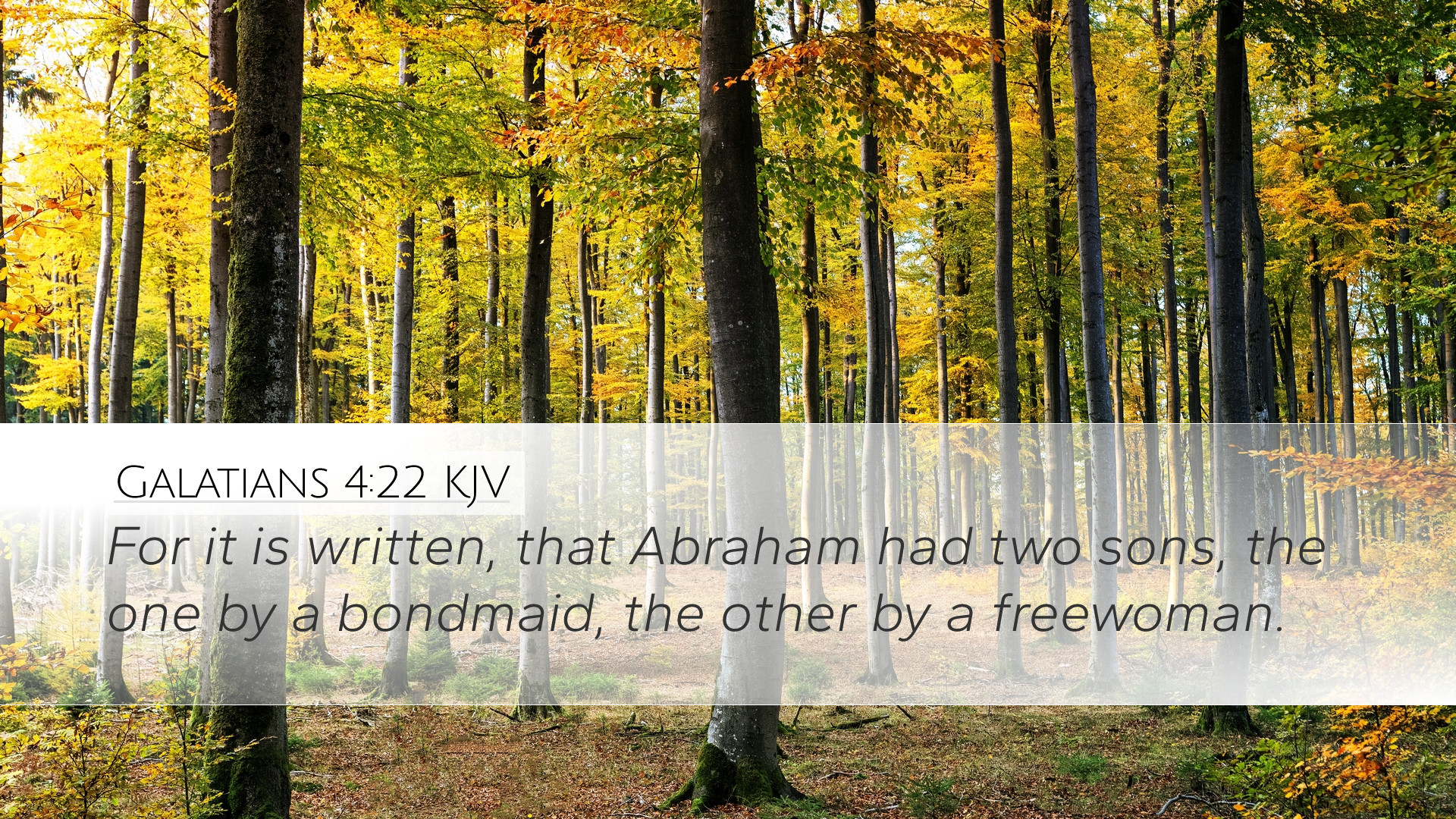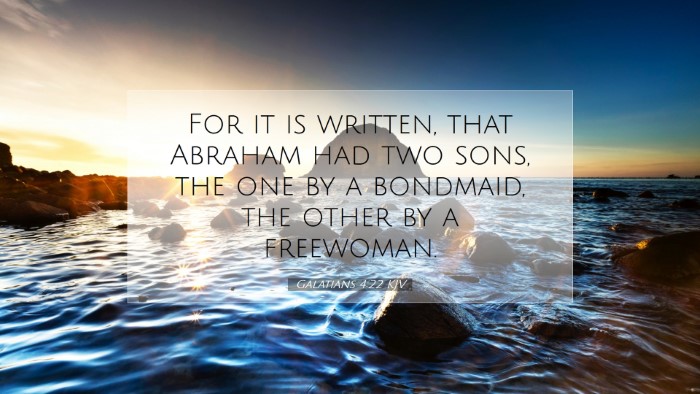Commentary on Galatians 4:22
Galatians 4:22 states, "For it is written that Abraham had two sons: one by the bondwoman and one by the freewoman." This verse serves as an essential pivot in the Apostle Paul's argument, contrasting the two covenants through the allegory of Abraham’s sons. Here, we bring together insights from several public domain commentaries to delve into its implications.
Historical Context
The Apostle Paul, in writing to the Galatians, seeks to address the issue of legalism versus grace. His reference to Abraham helps illustrate the opposing natures of the old and new covenants. The story of Abraham's two sons—the son of the bondwoman, Ishmael, and the son of the freewoman, Isaac—is foundational for understanding the contrasts he elaborates upon.
Insights from Matthew Henry
Matthew Henry emphasizes the thematic contrast between the two women in the allegory—Hagar, representing the old covenant, and Sarah, representing the new. He states:
“The children of Hagar are born after the flesh, which is full of sin, while those of Sarah are born by promise, representing faith and grace.”
Henry notes that the use of "bondwoman" (Hagar) to signify a slave relationship indicates the futility of relying on the law for salvation—hence, those born through her represent those under the law, whereas those born of Sarah symbolize the free and divine promise of grace through faith.
Insights from Albert Barnes
Albert Barnes offers a meticulous exposition on the implications of this verse. He observes that:
“The mention of Abraham’s two sons serves as a clear demonstration of the principle that the spiritual children of Abraham are those who embrace faith in God’s promise rather than mere adherence to the Mosaic law.”
Barnes highlights that by invoking the figure of Abraham, Paul asserts that salvation and righteousness are not obtained through physical descent or legal adherence but through faith. This challenges the Judaizers' assertion that obedience to the law was necessary for salvation.
Insights from Adam Clarke
Adam Clarke adds further depth through his view on the allegorical interpretation of the narrative. He writes:
“The allegory of Hagar and Sarah serves to delineate clear boundaries between law and grace, illustrating that the law gives birth to bondage, whereas the promise yields liberty.”
Clarke delves into the backgrounds of Hagar and Sarah, noting that their circumstances mirror the differing approaches humanity has toward God’s covenant. The physical birth of Ishmael represents the inadequacies of human effort in achieving righteousness, while Isaac's miraculous birth through divine promise exemplifies the transformative power of faith that transcends human limitations.
Theological Implications
In examining Galatians 4:22, several theological themes arise:
- Covenantal Theology: The verse calls into question the nature of divine promises versus human attempts at righteousness.
- Faith vs. Works: The contrast between works of the law and faith in God's promise is central to understanding Pauline theology.
- Identity in Christ: The distinction between being a child of the bondwoman and a child of the freewoman speaks to the identity that believers have in Christ.
Application for Believers
For contemporary believers, Galatians 4:22 serves as a reminder of the source of their identity:
- Those who trust in Christ are not enslaved to the law, but are liberated by grace.
- Faith is the means through which we access God's promises, just as it did for Abraham.
- Believers are encouraged to reflect on the nature of their relationship with God—are we pursuing the freedom that comes through faith, or the bondage that comes through self-righteousness?
Conclusion
Galatians 4:22 highlights a fundamental truth about God's redemptive plan and the nature of salvation. By invoking the story of Abraham’s two sons, Paul delineates the stark contrast between life under the law and life under grace. Whether one looks through the lens of Matthew Henry, Albert Barnes, or Adam Clarke, the allegorical teaching built into this verse urges a profound understanding of our identity as children of promise, born not of human effort but through faith in the divine promise of God.


